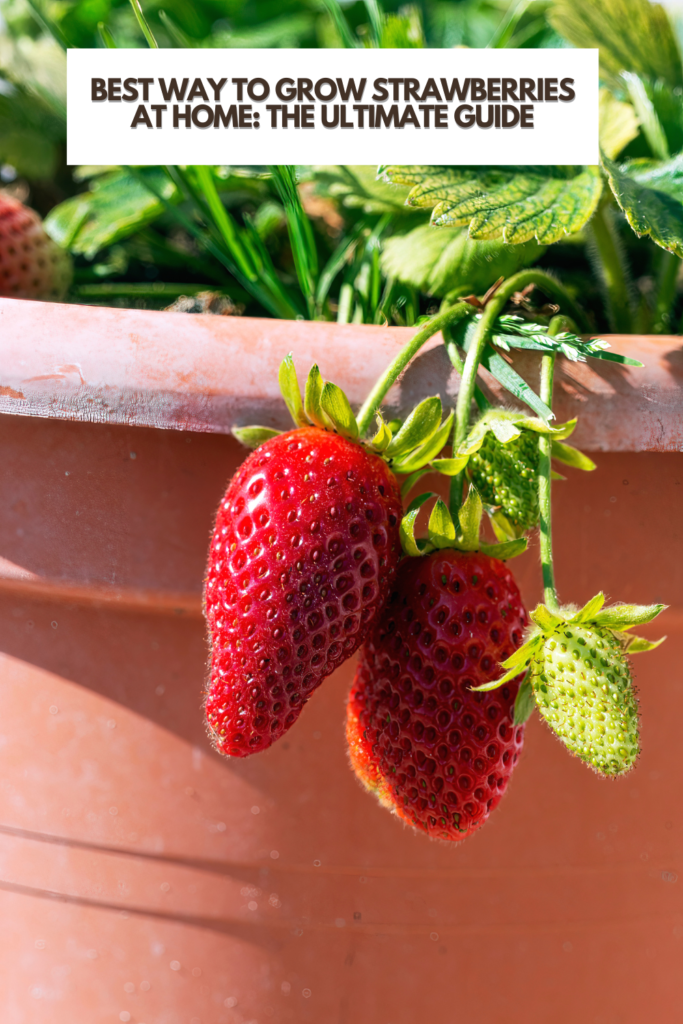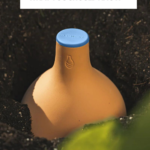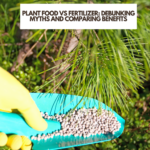Are you looking for the best way to grow strawberries at home? Growing strawberries at home can be an incredibly rewarding and enjoyable endeavor, as these delicious fruits provide numerous health benefits and can spruce up any garden.
With the right conditions, planning, and care, you can successfully grow bountiful strawberry plants in your very own space.
In this article, we will discuss important aspects such as varieties, ideal conditions, and proper containers for growing strawberries.
Before diving into the planting process, understanding the different varieties of strawberries is crucial in order to make an informed decision on which type best suits your needs and preferences.
FTC DISCLOSURE: Some of the links in this post are affiliate links. If you click on them and make a purchase, I will receive a small finder’s fee on the sale. This does not increase your price in any way shape or form. Using these links help support the continuation of this website. All opinions are my own. Thank you in advance.
Once you’ve selected your desired variety, getting started will require a focus on the ideal conditions for growth and the selection of an appropriate container.
Sowing, planting, and caring for your strawberries will involve attention to detail and dedication, but the outcome of having your own strawberry bed will be truly satisfying.
Key Takeaways
- Understand strawberry varieties and choose the right one for your needs
- Focus on ideal growing conditions and proper containers for success
- Dedicate time to sowing, planting, and caring for your homegrown strawberries
Understanding the Varieties of Strawberries
When it comes to growing strawberries at home, it’s essential to understand the different varieties available. There are mainly three types of strawberries: June-bearing, everbearing, and day-neutral. Having knowledge about these varieties will help us choose the right one according to our needs and preferences.
June-bearing varieties of strawberries are the most common type and are known for producing one large harvest each year, usually in early summer. Normally around June.
These strawberries come in many sub-varieties which are further categorized into early, mid-season, and late-season harvests. June-bearing plants are the most popular choice for home gardeners as they produce an abundance of flavorful berries.
Everbearing strawberries produce multiple harvests throughout the summer and sometimes into fall. Although the individual harvests may not be as large as those from June-bearing plants, everbearing varieties tend to produce a steadier supply of berries over a longer period.
These plants are perfect for people who desire a continual supply of fresh strawberries throughout the late summer and the rest of the season.
Day-neutral strawberries are unique in that their growth and production are not affected by the number of daylight hours. They produce fruit consistently from late spring to early fall, as long as temperatures stay between 35-85°F.
While their berries may be slightly smaller than those produced by June-bearing or everbearing varieties, day-neutral strawberries offer the advantage of producing fruit almost all season long.
In summary, each strawberry variety has its advantages that cater to different needs and preferences:
- June-bearing: Abundant, large harvest once per year.
- Everbearing: Multiple harvests spread over summer into fall.
- Day-neutral: Consistent fruit production throughout the season.
Carefully considering these options will allow us to make the best decision when choosing which variety to grow in our home gardens, resulting in fruitful and enjoyable strawberry seasons.
Getting Started: The Ideal Conditions for Growing Strawberries
To successfully grow delicious strawberries at home, we need to create the perfect environment for our plants. Let’s start with some of the essential conditions that strawberries thrive in.
First and foremost, strawberries require well-drained soil. Heavy and waterlogged soils can lead to the rotting of roots and the growth of diseases. Ideally, the soil should have a slightly acidic pH of 5.5 to 6.8.
It’s a great idea to perform a soil test to determine the pH and nutrient levels of the ground or raised bed you plan to use. This will help you address any deficiencies before planting.
How Many Hours of Sun Do Strawberries Need
Now, let’s talk about light. Strawberries love the sun, so it’s essential to choose a location that receives full sun—at least six to eight hours of sunlight per day. The more sun they get, the better your harvest will be!
It’s crucial to provide adequate air circulation around your plants as well. Good airflow helps prevent diseases and keeps your strawberry plants healthy. We recommend planting strawberries in rows with ample space and enough organic material between each plant—approximately 12 to 16 inches apart.
Different climates can impact how strawberries grow. In milder weather conditions, growing strawberries directly in the ground is an excellent option.
However, if you live in an area prone to extreme weather fluctuations, you might consider using raised beds. Raised beds offer better temperature and moisture control, ensuring a more consistent environment for your plants.
By focusing on these vital factors—soil, sun, light, air circulation, and adjusting for your specific climate—you’ll set yourself up with the ideal conditions to grow the most delicious and bountiful strawberries at home!
YOU MIGHT ALSO LIKE TO READ:
What To Do With Leftover Garden Soil
Selecting the Proper Container for Growing Strawberries
When growing strawberries at home, it’s essential to choose the right container for optimal growth. We recommend using pots that are at least 8 inches in diameter and have drainage holes to prevent over-watering.
A variety of materials work well for containers, such as terracotta, plastic, or ceramic pots. Let’s discuss some important factors to consider when selecting a container.
Size: The size of the container plays a crucial role in the growth and health of your strawberry plants. Generally, a pot with a diameter of 8 to 12 inches is ideal for most strawberry varieties. This ensures that the plants have ample space for root growth and proper airflow.
Material: The material of the container affects the overall health and well-being of your strawberry plants. Terracotta pots are a popular choice, as they allow for good air circulation, while plastic pots are lightweight and more affordable.
Ceramic pots can be a stylish choice, but make sure they have proper drainage to avoid excess moisture buildup.
Drainage: Drainage is critical when growing strawberries in containers. Ensure that the pot you select has drainage holes at the bottom to prevent over-watering. This will help maintain a healthy root system and prevent issues such as root rot and have a healthy plant.
Sowing and Planting Guidance for Growing Strawberries
When it comes to growing strawberries at home, we need to focus on the best methods for sowing and planting. Following a proper routine can make all the difference in a thriving strawberry garden.
To begin with, purchase healthy strawberry plants from a reputable nursery. It’s ideal to choose the bare root variety, as these plants establish themselves better. Alternatively, one can start with seeds, but it’s important to note that this takes longer and may produce fewer fruits.
Planting strawberries should be done in early spring, allowing our plants the time to settle before the growing season. We must ensure that the soil is prepared in advance by adding compost or organic matter to enhance fertility.
When it comes to planting, we should follow these steps:
- Dig a hole slightly larger than the root system of the strawberry plant.
- Place the plant in the hole so that the crown is at soil level.
- Fill the hole with soil, ensuring that the roots are covered entirely, but the crown remains uncovered.
- Water the plant thoroughly to help it settle.
Additionally, here’s a table for ideal planting guidelines:
| Aspect | Recommendation |
|---|---|
| Spacing | 18-24 inches |
| Depth | Crown at soil level |
| Soil pH | 6.0-6.5 |
| Sun Exposure | Full sun |
| Watering | Consistently moist, but not waterlogged |
Once our strawberries are planted, it’s vital to maintain proper care. This includes regular watering, especially during hot weather, and using a balanced fertilizer. By following these sowing and planting guidance steps, we’ll be on our way to a successful strawberry garden.
YOU MIGHT ALSO LIKE TO READ:
Dirt vs. Soil: What’s really the difference?
Caring for Your Strawberries
To ensure the healthy growth of our strawberries at home, there are several aspects of care that we need to consider. These mainly include proper watering, weed management, fertilization, and ensuring appropriate mulching.
It’s crucial to strike a balance when watering our strawberry plants. Keeping the soil consistently moist, but not waterlogged, is ideal for their growth.
Overwatering can lead to poor drainage, which in turn leads to root rot and other diseases. Aim for watering them at least once per week, ensuring that the water penetrates up to six inches deep into the soil.
Weeding is essential to prevent unwanted plants from competing with our strawberries for nutrients and sunlight. We should regularly inspect our garden and remove weeds as soon as we spot them. A practical approach to prevent weed growth is through mulching.
Straw mulch is an excellent choice, as it helps retain soil moisture and keep the fruits clean. Spread a layer of straw mulch around our plants, making sure not to smother them.
Fertilization plays a significant role in the overall health and productivity of our strawberry plants. A well-balanced fertilizer, like a 10-10-10 (N-P-K) formula, applied twice a year—once in early spring and again after the first harvest—will help promote growth and fruit production. While chemical fertilizers are beneficial, we can also use organic alternatives like compost or well-rotted manure. Spread a layer of compost around our plants every spring to replenish nutrients and improve soil quality.
Harvesting and Yield
When it comes to growing strawberries at home, there are some essential steps for harvesting and ensuring a bountiful yield. As we venture into this process, our aim is to provide you with clear, confident, and knowledgeable guidance.
Firstly, the timing of the harvest is crucial. We want to pick the berries when they are at their ripest and most juicy. This typically occurs 4-6 weeks after the blossoms have been pollinated. Keep in mind that we need to be patient, as each variety of strawberry will have its own unique timeline from flowering to fruit production.
As we begin harvesting, we recommend picking the berries early in the morning. This is when they are at their coolest temperature, ensuring the fruit’s quality and freshness. When picking, gently hold the stem between your fingers and twist, avoiding any damage to the berry itself or the remaining plant. It’s important to leave a small portion of the stem intact with the fruit. This will help it maintain its freshness for a longer period.
Now let’s discuss the yield. Our goal, of course, is to maximize our strawberry production. The typical yield for a well-tended strawberry plant producing fruit for the first time is roughly one quart per sq. ft. of growing space. However, there are several factors that can impact the yield, including:
- Plant variety
- Plant spacing
- Soil quality and fertility
- Water management
- Pest and disease control
By addressing these variables, we can significantly enhance our strawberry yield.
Lastly, consistent harvesting of ripe berries will encourage further production. Regularly removing the fruit will signal to the plant that it should continue to produce more berries. This process is essential for maximizing our yield and enjoying an abundance of delicious, homegrown strawberries.
Understanding and Managing Pests and Diseases
When growing strawberries at home, it is essential that we are aware of the various pests and diseases that can affect our plants. In this section, we will briefly discuss some common pests and diseases, as well as their management techniques.
One common issue for strawberry plants is bird damage. Birds are known to eat the ripe fruit and destroy leaves and stems. To protect our plants from birds, we can use netting. Netting provides a barrier between the plants and the birds and is an effective long-term solution. This is the netting we used during out last growing season.
Pests are another concern for strawberry growers. Among them, slugs and snails are common culprits. They can damage the fruit, leaves, and stems. Using slug bait or a natural solution, such as diatomaceous earth around the base of the plants, can help to keep these pests at bay.
Strawberry plants can also be affected by various diseases and fungi. One such disease is powdery mildew, which is a fungal infection. It can cause white, powdery patches on the leaves, stunted growth, and malformed fruits. To prevent powdery mildew, ensure proper airflow and avoid overcrowded planting. Fungicides can also be used if necessary.
Fungal diseases are often caused by different types of fungi infecting the plants. Some common fungal diseases affecting strawberries are anthracnose, leather rot, and gray mold.
To manage these diseases, it is essential to maintain good hygiene within our garden, such as removing dead leaves and fruit, and practicing crop rotation. When needed, applying appropriate fungicides can help control the spread of fungal diseases.
Strawberry Propagation through Runners
Growing strawberries at home can be an enjoyable and fruitful experience, especially when we understand how to properly propagate them through runners. In this section, we’ll discuss the process and share tips on maximizing success.
Runners are horizontal stems that grow from the main plant and produce new plants, commonly referred to as “daughter plants.” During the growing season, we should regularly monitor these runners as they begin to grow and establish roots. To encourage strong growth, our first step is to select healthy and robust mother plants to propagate.
Once we’ve chosen our mother plants, let’s prepare the ground by laying down a mat or weed-suppressing fabric. This will help keep the soil moist and provide a good environment for the new plants to grow. When placing runners, ensure they are spaced 30 cm apart and press them gently onto the mat.
As the daughter plants start to develop roots and leaves, we can take advantage of this method by organizing our strawberry patch in rows. To maximize space and yield, create rows 75 cm apart from each other. This will allow for easier access when it comes time to harvest and maintain the plants.
One factor to keep in mind when propagating through runners is that sometimes, fewer runners can result in better-quality plants. We recommend removing excess runners from each parent plant, focusing on the two or three strongest ones. This will help channel the plant’s energy into establishing these stronger runners as independent plants with strong strawberry roots.
Preparation for Autumn and Winter
As the autumn season approaches, it’s crucial for us to properly prepare our strawberry plants for the colder months. Although strawberries are quite resilient, we must take certain measures to ensure they continue to flourish as they are perennial plants. First, let’s discuss how our shed can play a crucial role in this preparation process. During late August, I begin to plan for the cold
Having a well-ventilated shed is essential for protecting our strawberry plants during winter. By storing them in the shed, we help them maintain their health and prevent damage caused by harsh weather conditions such as frost.
When the first frost hits, it’s the ideal time to move our potted strawberries into the shed. We should regularly inspect the plants for any signs of mold or diseases and trim any dead or damaged parts.
Strawberries should be protected from frost, especially the roots. To do this, we can surround the plants with mulch, such as straw or wood chips, after the first frost. This insulates the soil and prevents the root systems from freezing. We need to keep in mind that mulch should be removed in early spring to avoid encouraging pests or diseases.
During autumn and winter, our strawberries will require less water than usual. However, we still need to provide them with enough hydration to prevent any damage.
We recommend watering the plants every two to three weeks to keep the soil slightly moist but not overly saturated. Don’t forget to monitor the plants for any signs of dehydration, such as wilting leaves or dry soil, and adjust our watering schedule as needed.
By diligently preparing our strawberries for the colder seasons, we increase the chances of a bountiful harvest when spring and summer return. With just a few simple steps, we can ensure our homegrown strawberries thrive and continue to provide delicious fruit for us to enjoy.









